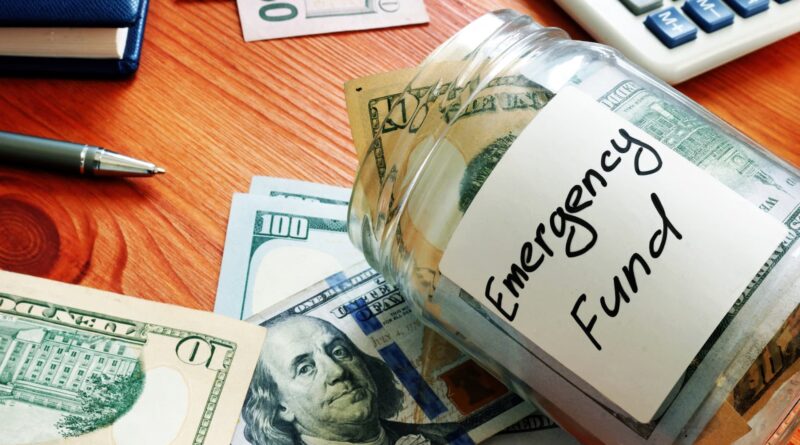Emergency Funds – How Much Should You Save?
Emergency Funds – How Much Should You Save?
Emergency funds are important to have in case of unexpected events. These can include unplanned medical bills, car repairs, and job losses. Having enough money to cover three to six months of expenses can help you avoid costly debt Emergency Funds – How Much Should You Save?.
The best way to build your emergency fund is through budgeting. Start by saving a small amount each month, then gradually increase it. Also, try to save any windfalls you receive, such as tax refunds, bonuses or cash gifts.
Step 1: Reduce your spending.
Many unexpected expenses arise in life, from car repairs to a sudden loss of income. These expenses can be difficult to cover without a safety net, and may lead to debt or other financial problems. An emergency fund is a great way to ensure that you have enough money set aside for these emergencies.

Ideally, you should have between three and six months’ worth of expenses in your emergency savings account. This amount can seem daunting at first, but it is possible to save this much over time by making small changes to your spending habits.
Start by calculating how much you spend each month on necessities, such as housing, food, insurance and transportation. This number should serve as your first savings goal, and should be your focus for the next few months. Once you have reached your goal, you can begin to make larger changes to your budget.
Once you have saved up an emergency fund, it is important to keep it in a place that is easy to access. It is a good idea to keep this money in a separate account from your regular savings account, to prevent you from accidentally raiding it for other purposes. Another option is to put the money in a prepaid card, which can be accessed only when you have an actual emergency. This will help you avoid using credit or loans for these expenses, which can be very costly in the long run.
Step 2: Plan for the future.
If you’re struggling to save enough for an emergency fund, consider taking a closer look at your budget and making some changes. Identifying areas where you can cut back, even just a dollar a day, can go a long way in helping you reach your savings goal. You can also start saving your windfalls, like tax refunds or credit card rewards. Lastly, you can set up automatic contributions from your checking account to help you save more consistently.
While you shouldn’t dip into your emergency savings to cover everyday expenses, such as groceries or gas, emergencies can still disrupt your regular routine and require a quick response. Your emergency funds should be used for expenses that cannot be put off, such as eviction or car repossession, or those that will have severe consequences (such as loss of income). It’s also important to remember that once you use your emergency funds, you need to work quickly to rebuild them.
It may take some time to build up your emergency fund to three or six months worth of expenses, but it’s possible with the right planning and consistent effort. It’s also a good idea to keep your emergency savings in its own separate account so that you’re not tempted to spend it on non-emergency items. This is a great way to prevent lifestyle creep, which is the tendency to spend more as your income increases.
Step 3: Open a savings account.
Having an emergency fund is important to help you cover unexpected expenses. Unexpected expenses can include things like car repairs, a medical bill or even losing your job. These costs can be stressful and difficult to manage if you are not prepared.
The key to saving for emergencies is to set a savings goal and stick to it. A good rule of thumb is to save enough money to cover three to six months worth of expenses. To get started, start by calculating how much you spend each month on essentials, such as housing, food and transportation. This number will serve as your baseline.
To help you stick to your savings goals, open a separate savings account for your emergency fund. This way, you will be less tempted to use the funds for non-emergencies. Also, if you do have to dip into your emergency funds, be sure to replenish them as soon as possible.
Another way to make it easier to save is to set up automatic transfers from your checking account to your savings account each payday. This can be especially helpful if you are living paycheck to paycheck.
Step 4: Set-up an emergency fund.
Many financial experts recommend having enough savings in an emergency fund to cover three to six months of expenses. This is an important goal that can help protect you from going into debt in the event of a financial setback.
To start building your emergency savings, set aside a fixed amount of money each month (preferably at least 20% of your net income). Then, commit to increasing your contributions over time. It may help to make these contributions automatic by setting up recurring transfers or directing your employer direct deposits to go toward your emergency savings account.
Another way to increase your emergency funds is to save any windfalls you receive, such as a tax refund, inheritance, cash gift, or bonus. These additional funds can help you get closer to your goal faster.
Once you’ve built up your emergency savings, it’s important to keep them separate from your everyday spending. This will prevent you from accidentally dipping into your emergency funds for non-emergency items, like restaurant bills or impulsive purchases.
You should also keep your emergency funds in an easily accessible location, such as a bank or credit union savings account that doesn’t charge fees and offers a high interest rate. Additionally, you should avoid storing your emergency funds in a retirement or investment account, as these accounts can be subject to market risk.
Step 5: Increase your income.
Having an emergency fund is critical for financial peace of mind. It can help you pay unexpected expenses and avoid the need to take on debt from high-interest credit cards or loans. However, saving enough money to cover an emergency can be difficult, especially for those with limited incomes.
If you’re having trouble getting started, try setting smaller goals. For example, instead of saving for three months’ worth of expenses right away, aim to save $5 a day. By reaching these small goals, you can build momentum and confidence in your ability to save.
Another way to increase your savings is to set up automatic transfers from your paycheck into a separate account or prepaid card dedicated to your emergency funds. This will keep the money out of sight and out of mind, so you won’t be tempted to spend it on things that aren’t emergencies. Many employers offer direct deposit, so you can have a certain amount of your salary automatically transferred into a savings or other type of account.
If you choose to do this, make sure to use a savings or other account that is insured by the Federal Deposit Insurance Corporation (FDIC) or National Credit Union Administration (NCUA). Also, consider using an online or mobile bank because they typically offer higher yields than traditional brick-and-mortar banks. You can also invest in U.S. Treasury bills, which are generally backed by the federal government and mature on a predictable schedule.
Conclusion
Having an emergency fund can help you avoid the stress and financial consequences of unexpected expenses. It can also give you more control over your finances and allow you to break the paycheck-to-paycheck cycle that many Americans live in.
The question of how much you should save in an emergency fund varies depending on your personal situation. However, most experts recommend having between three and six months of living expenses saved. This number should include essential expenses such as rent, food and debt payments. It should not, however, include non-essential luxuries like entertainment and dining out.
In addition to setting a savings goal, you should also decide where to put your money. There are many different options, but some of the best places to save for emergencies include a bank or credit union savings account, an online savings account or a prepaid card. The important thing is that you choose an account that offers liquidity, protection and a competitive interest rate.
While it may take some time to build up an emergency savings account, the payoff is worth it. Financial emergencies can occur at any time, and having an emergency fund can help you stay out of debt and avoid financial disasters like losing a job. So, if you haven’t already, start saving for an emergency fund today! Just remember, the sooner you start, the more likely it is that you will reach your goals.


Thank you for your sharing. I am worried that I lack creative ideas. It is your article that makes me full of hope. Thank you. But, I have a question, can you help me?
Can you be more specific about the content of your article? After reading it, I still have some doubts. Hope you can help me.
Thank you for your sharing. I am worried that I lack creative ideas. It is your article that makes me full of hope. Thank you. But, I have a question, can you help me?
Your article helped me a lot, is there any more related content? Thanks! https://accounts.binance.com/el/register?ref=IQY5TET4